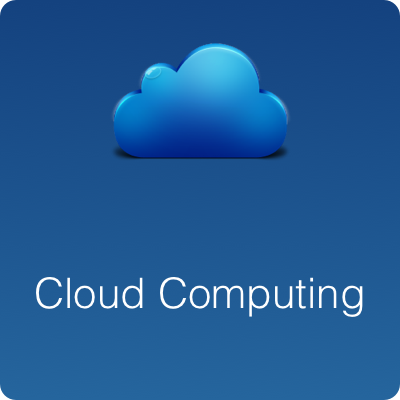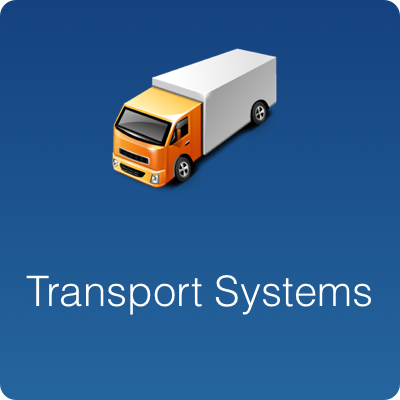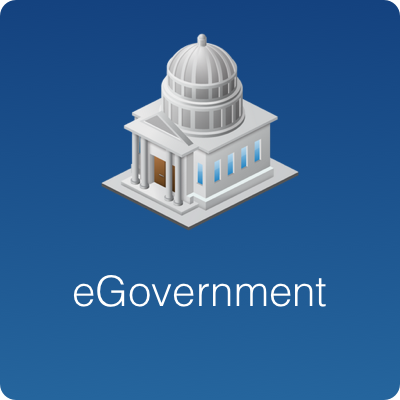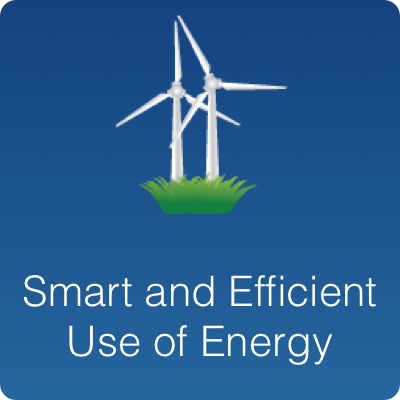To understand more of the EU Catalogue of ICT Standards for Procurement, please go to the About page.
Follow us on Twitter @EUcatprocure
Our aim is to develop material that is of practical use for procurers of digital goods and services.
So far the European Catalogue is a prototype, a concept demonstrator. We want to establish a procurement community that feeds contents into it. The prototype addresses five domains which can be accessed below. Additional domains may be added in future years.
These domains are:
-
ICT (Information and Communication Technologies): for the full list of standards (download here)
-
eGovernment: take a look at criminal records here, at e-procurement here, ...
-
Cloud computing: the list of needs, guidelines and standards may be found here
-
efficient use of energy systems: more here
-
electronic tolling systems:
Please access contents for these domans from the buttons below

|

|

|

|
For each of those domains, the EU Catalogue lists proposed needs. A procurement need may be defined as a subject of tender. We believe agreeing on procurement needs is a prerequisite to creating a community of practitioners in procurement. It creates a stable comparison point and provides an anchor for consolidating the numerous resources available over the web in a single place, such as guidelines, projects, best practices and lessons learned. Consolidating sources of knowledge is essential because procurement is becoming more and more complicated and horizontal. To understand which types of guidelines the Catalogue will consolidate, take a look at the new approach to the procurement of digital.
Surveys will be organized and sent to the community to agree on needs, with a target to finalise the procurement needs by end 2017.
Besides needs and associated guidelines, the Catalogue also provides with a list of ICT standards which may be referred to in procurement. More here.
The new approach to procurement of digital goods and services
Procurement needs a new approach to account for the challenges and potential of digitalization to create value and new service to citizens. The European Catalogue will connect the dots for procurers by listing applied guidelines in areas which help create digital value: strategic procurement (green, social, innovative), the seven principles of the EU eGovernment Action plan 2016-2020, digital skills, interoperability and reuse as facilitated by the European Interoperability Framework and the Connecting Europe Facility Building blocks.
Traditionally, public procurement has been focusing on procurement law and processes and on price. Very logically, the public procurement of digital focused on automation by digitalising processes. Moving paper to digital was at the heart of the procurement of digital, perhaps also because of the available market of ICT solutions which heavily relied on workflow and database technologies.
But soon public services started to use technologies beyond process automation and developed know-how to offer new services and connect to citizens. Internet of things is used in cities to create urban mobility services. Cloud increases the coordination between administrations by creating an exchange platform, which can then serve to develop analytic services using big data.
The EU catalogue will foster coordination among governments when it comes to the procurement of digital goods. It will help build an upstream understanding of the digital and its specifics in terms of procurement by listing applied guidelines from various streams linked to digitalisation, such as
-
Strategic procurement takes up on three societal challenges: green, innovative, and social. See EU related websites such as
-
The buying green handbook which helps lower environmental impact and the EU GPP criteria are developed for various sectors to facilitate the inclusion of green requirements in public tender documents,
-
Buying social is a guide to taking account of social considerations in public procurement,
-
The Catalogue refers to strategic procurement EU guidelines, associating them to the appropriate procurement needs, and it calls practitioners to submit national guidelines, applied practices, or experiences.
-
Besides providing a framework to help Member states collaborate in the modernization of public administrations, the EU eGovernment action plan 2016-2020 also offers seven principles which create value in the digital world: digital by default, once only principle, inclusiveness and accessibility, openness and transparency, cross-border by default, interoperability by default, and trustworthiness & security.
The Catalogue calls practitioners to submit applied guidelines or share experiences on applying the seven EU eGovernment principles.
-
Digital-first initiatives (Estonia, UK with g-cloud, etc..) are success stories in Member States based on a well-articulated plan and on clear principles and objectives. Success can be replicated and the wheel should not be reinvented.
The Catalogue invites practitioners to submit applied guidelines or share experiences on national digital-first strategies.
-
Interoperability removes the costs associated with developing solutions with external ICT systems. Reusing is also an easy way to create value at a reduced price. Procurement that accounts for reuse and interoperability increases digital value.
The EU catalogue is part of the new European Interoperability Framework (EIF), see recommendation 23 of Annex II. The EIF offers public administrations concrete recommendations on how to improve governance of their interoperability activities, establish cross-organisational relationships, streamline processes supporting end-to-end digital services, and ensure that both existing and new legislation do not compromise interoperability efforts. More in the EIF.
Recommendation 23:
Consult relevant catalogues of standards, specifications and guidelines at national and EU level, in accordance with your NIF and relevant DIFs, when procuring and developing ICT solutions.
The EU Catalogue seeks to facilitate the reference in procurement of Connected Europe Facility (CEF) reusable digital services. Given a specific procurement need, the Catalogue refers to the CEF reusable digital service and it invites practitioners to submit national guidelines, applied practices, or experiences in the procurement of such CEF reusable blocks.
Use of standards in procurement is regulated by trade agreements and by EU legislation, but 12% of tenders do not respect rules. The European Catalogue lists standards that can be referred in procurement.
The use of standards in public procurement is regulated by EU legislation and by trade agreements. A guideline on referring standards in public procurement will be issued by the Joint Initiative on Standardisation working group 11. We will keep you posted!
The EU Catalogue will list standards that comply with trade agreements and EU regulation.
Regulation 1025/2012 offers definitions for standards and technical specifications and standardisation bodies.
(1) ‘standard’ means a technical specification, adopted by a recognised standardisation body, for repeated or continuous application, with which compliance is not compulsory, and which is one of the following:
(a) ‘international standard’ means a standard adopted by an international standardisation body;
(b) ‘European standard’ means a standard adopted by a European standardisation organisation;
(c) ‘harmonised standard’ means a European standard adopted on the basis of a request made by the Commission for the application of Union harmonisation legislation;
(d) ‘national standard’ means a standard adopted by a national standardisation body;
[..]
(4) ‘technical specification’ means a document that prescribes technical requirements to be fulfilled by a product, process, service or system and which lays down one or more of the following:
(a) the characteristics required of a product including levels of quality, performance, interoperability, environmental protection, health, safety or dimensions, and including the requirements applicable to the product as regards the name under which the product is sold, terminology, symbols, testing and test methods, packaging, marking or labelling and conformity assessment procedures;
(b) production methods and processes used in respect of agricultural products as defined in Article 38(1) TFEU, products intended for human and animal consumption, and medicinal products, as well as production methods and processes relating to other products, where these have an effect on their characteristics;
(c) the characteristics required of a service including levels of quality, performance, interoperability, environmental protection, health or safety, and including the requirements applicable to the provider as regards the information to be made available to the recipient, as specified in Article 22(1) to (3) of Directive 2006/123/EC;
(d) the methods and the criteria for assessing the performance of construction products, as defined in point 1 of Article 2 of Regulation (EU) No 305/2011 of the European Parliament and of the Council of 9 March 2011 laying down harmonised conditions for the marketing of construction products ( 1 ), in relation to their essential characteristics;
(5) ‘ICT technical specification’ means a technical specification in the field of information and communication technologies;
[..]
(8) ‘European standardisation organisation’ means an organisation listed in Annex I;
(9) ‘international standardisation body’ means the International Organisation for Standardisation (ISO), the International Electrotechnical Commission (IEC) and the International Telecommunication Union (ITU);
(10) ‘national standardisation body’ means a body notified to the Commission by a Member State in accordance with Article 27 of this Regulation.
In addition, pursuant to art. 13 of regulation 1025/2012, with the advice of the Multi-Stakeholder Platform on ICT Standardisation, the European Commission may issue a Commission Decision to recognize fora and consortia technical specifications for use in procurement. The list of identified technical specifications can be found here.
Interoperability is insufficiently taken into account in public procurement. It is an external cost often ignored but which could be made part of the total lifecycle cost. It can help reduce the impacts of vendor lock-in
The new procurement Directive 2014/24/EU offers concepts that support a more holistic approach to costs:
- Use of ‘most economically advantageous tender’ (MEAT) as default criteria (Art. 67). When transposing the Directives, member states may choose to forbid or restrict the use of lowest price as the sole award criterion.
- The use of life cycle costing (LCC) as a method for assessing tender costs is clarified (Art. 68). Contracting authorities may select to include costs imputed to externalities in this calculation.
The externalities that can be imputed under LCC can refer to societal challenges such as environment but can also refer to other types of external costs such as the lack of interoperability. Interoperability removes the costs associated with linking to incompatible systems. It is a principle of both the EU eGovernment Action plan principles and the European Interoperability Framework.
To increase interoperability, the Catalogue facilitates the use of standards in procurement (more here) and the reuse of digital services (more here). Also, the Catalogue provides interoperability guidelines and it invites practitioners to submit national guidelines, applied practices, or experiences on procuring interoperable services. When guidelines exist to integrate the lack interoperability in MEAT or LCC, this will be indicated.
As part of Action 23 of the Digital Agenda , the European Commission has developed guidance on the link between ICT standardisation and public procurement to help public authorities to use open standards to promote efficiency and reduce lock-in. In 2013, the Commission adopted the Communication on standardisation and public procurement. One of the findings following a survey of procuring authorities conducted under Action 23 shows that at least 40% of respondents perceive some degree of vendor lock-in arising from either (a) a lack of interoperability and compatibility between existing and new systems or solutions, or (b) from a lack of transferability of data and information between old and new systems. Lock-in arising from institutional factors (e.g. staff familiarity with existing products) was noted by 25 per cent of respondents; and lock-in arising from service providers was noted by just under 20 per cent of respondents.
Where relevant, the EU Catalogue will refer to the findings of the above initiative and other guidelines to reduce lock-in.
The European Catalogue is part of the Digital Single Market Strategy and is action 5 of the EU eGovernment action plan. How does the EU Catalogue fit the policy context? Take a look at it here.
The EU Catalogue is part of the Digital Single Market Strategy for Europe (COM(2015) 192 final) which calls for greater uptake of standards in procurement. In particular, it points out that there are diverging national recommendations for referring to selected ICT standards and technical specifications in public procurement. These ICT standards and technical specifications are usually listed in national catalogues which may lead to market fragmentation and prevent the emergence of EU wide solutions in the delivery of European public services such transport, energy, or health.
The Catalogue is also action 5 of the EU eGovernment Action Plan 2016-2020 mandated the European Catalogue to work on procurement recommendations based on ICT standards for accelerating the digitalisation of public administrations.
In the ICT area, some Member States have developed a national catalogue of technical specifications which identifies technical specifications for use in procurement. How does the EU Catalogue link to national catalogues and CAMSS? What is the content of the EU Catalogue in the ICT area? What is the approach when it comes to Intellectual Property Rights (IPR) and open source? Discover it here.
When it comes to the pure ICT domain, some Member States have developed national catalogues which list technical specifications which they identified for use in procurement. A CAMSS study analysed the content of 17 national catalogues and detected significant overlap.
The EU Catalogue provides a mean to coordinate national catalogues by using a pre-catalogue which lists candidate technical specifications from national catalogues.
The European catalogue does not take a formal position in terms of open source because Member States have different approaches; it includes standards and technical specifications regardless of the related licensing conditions. However, to support the open source strategy developed by the European Commission and other European initiatives such as OSOR, wherever possible the European Catalogue clarifies any licensing conditions, including specific IPR issues. The following study provides unique statistical evidence on the importance of standard essential patents (SEPs) for key technologies in Europe.
Before engaging in tendering, it is good procurement practice to purchase any licensing rights implied by standards and technical specification which are referred to in your tender specification.
The EU Catalogue invites to submit any information and evidence on licensing terms associated to standards.
So what’s the plan? Learn about the next steps.
So far the European Catalogue is a prototype, a concept demonstrator.
The prototype proposes needs in four domains. Surveys and targeted workshops will be organised to finalise the needs in procurement by end 2017.
The Commission will launch a tender early 2018 to finalise the prototype by end 2018 and build a community.
Brochures are in preparation and will be posted on the home page.
Additional domains may be added in 2018.
The Commission is considering a Communication on the professionalisation of the procurement of digital.

